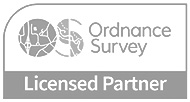The three peaks challenge is approaching fast, so here at Lovell Johns we have come up with some top tips for the kit you might want to take with you.
Climbing the three peaks requires a lot of planning into what you wear and what to take with you. We have compiled a list of all the things you might need.
Boots
Boots need to be flexible and comfortable – they are the most important bit of kit as they are likely to give you blisters and blisters will make the whole activity uncomfortable or stop you completely! Tips for boots:
– Buy soon and get used to wearing them
– Your toes shouldn’t touch the end of the boot when you’re going down hill
– Your heels shouldn’t rise up from the sole of the boot when you stand up on your toes
– Your boots should be wide enough across the top of your foot so your toes and feet don’t feel cramped (your feet will swell a bit when they get hot)
– Check the insoles as many boots come with cheap insoles and it might be worth upgrading to sorbothane or some more shock absorbant insoles
– Waterproofing is less important for these walks but always good to have waterproof boots!
– Cost approx £40 upwards – stay away from ultra cheap brands
– If your feet are odd sizes you can play around with socks or insoles to make up the difference
Socks
– Need to take three pairs so you can change after each walk
– If your boots fit properly then socks are less of an issue
– Depending on the room in your boots you could go for a thicker or thinner sock, if thinner then look at 1000 mile socks or even just wearing two pairs of thin socks. In this way the socks rub against each other rather than your foot against the boot.
Rucksack
– Make sure it has a waist belt or strap
– Add a liner (waterproof plastic bag) to the inside as most rucksacks are not very waterproof
– Bigger rucksacks tend to be made with better back systems (more adjustable and allow better airflow etc.)
Head torch
Trying to see where to put your feet on a rocky path in the dark can be hard work so it’s worth getting a good bright head torch and taking spare batteries.
Water bottle
The water bottle should be roughly 750 ml – 1ltr in size and either plastic or metal. Another option is a camelback water reservoir, this is a pvc water bag that goes in your rucksack with a tube to drink from as you walk so is more convenient for drinking on the go.
Other useful items
Compass and map
Walking poles
Navigation apps for your phone
Light walking trousers
Thin tops – layer up
Waterproof clothing
Hat and gloves
First aid kit
A first aid kit is essential as you never know what problems you might experience climbing the 3 peaks. A few basic things that should be included in this are:
– Compeed for blisters
– Knee support
– Plasters
– A bandage/support bandage
– Pain killers
– Ibuprofen gel or spray
– Mediwipes/wetwipes
– Microport or Transpore tape
A few other items that could come in useful in your first aid kit are:
– Waterproof notebook and pen
– Scissors
– Non adherent dressings
– Gloves
– Duct tape
– Wound dressings
– Little gauzes
– Safety pins
– Saline pods
– Compression trauma dressing
– Bothy bag
– Triangular bandage
– Steristrips
– Face schield
– Hypostop
– Dioralyte
– Immodium
– Hydrocortisone
Make sure you are fully kitted out for the three peaks challenge!







Comments are closed here.